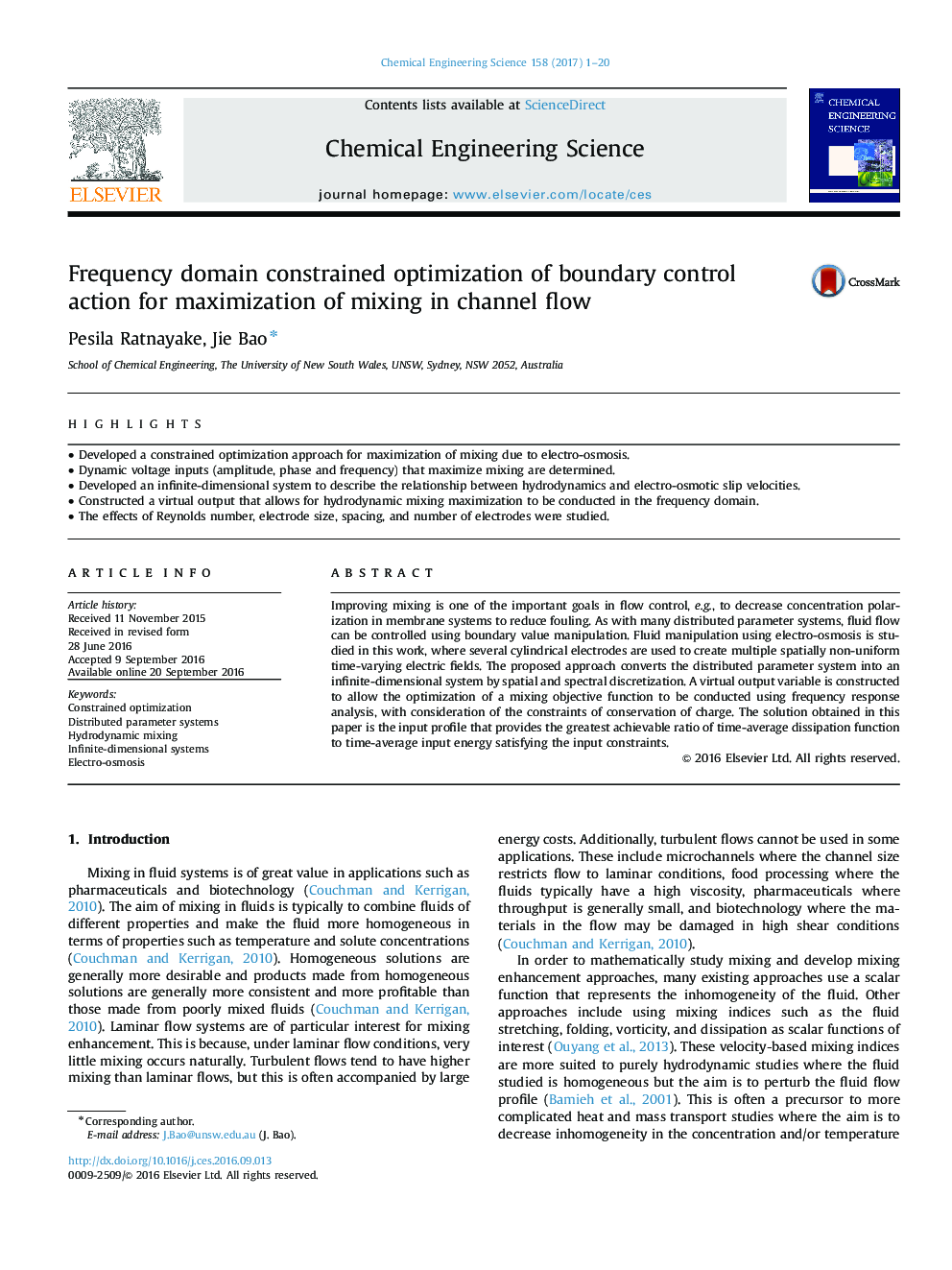| Article ID | Journal | Published Year | Pages | File Type |
|---|---|---|---|---|
| 6467901 | Chemical Engineering Science | 2017 | 20 Pages |
â¢Developed a constrained optimization approach for maximization of mixing due to electro-osmosis.â¢Dynamic voltage inputs (amplitude, phase and frequency) that maximize mixing are determined.â¢Developed an infinite-dimensional system to describe the relationship between hydrodynamics and electro-osmotic slip velocities.â¢Constructed a virtual output that allows for hydrodynamic mixing maximization to be conducted in the frequency domain.â¢The effects of Reynolds number, electrode size, spacing, and number of electrodes were studied.
Improving mixing is one of the important goals in flow control, e.g., to decrease concentration polarization in membrane systems to reduce fouling. As with many distributed parameter systems, fluid flow can be controlled using boundary value manipulation. Fluid manipulation using electro-osmosis is studied in this work, where several cylindrical electrodes are used to create multiple spatially non-uniform time-varying electric fields. The proposed approach converts the distributed parameter system into an infinite-dimensional system by spatial and spectral discretization. A virtual output variable is constructed to allow the optimization of a mixing objective function to be conducted using frequency response analysis, with consideration of the constraints of conservation of charge. The solution obtained in this paper is the input profile that provides the greatest achievable ratio of time-average dissipation function to time-average input energy satisfying the input constraints.
